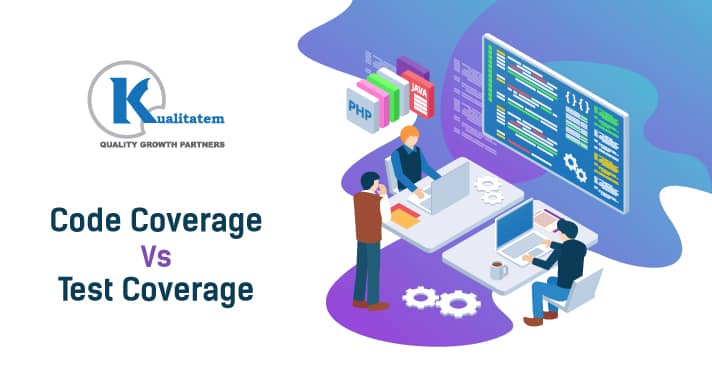Code Coverage Vs Test Coverage

- September 6, 2019
- HibaSulaiman
To err is human – This is pretty much understandable with respect to coding and testing software applications. Although testers use numerous methodologies and follow coding standards, there are some defects in the apps which is why rigorous software testing is preferred. Automated testing is preferred but it can never eliminate the need for human intervention. In the Agile and DevOps era, it is crucial to find a reliable mobile application testing company to test, measure and improve an app’s quality. Moving further, how do testers assess if all the features are covered in an app? Apparently there are two methods to do so, namely code coverage and test coverage.
Now let’s have a look at how the two approaches are different and their contribution to software quality assurance:
Code Coverage:
It’s a metric that is used to measure the number of lines covered by test cases. It lists down the following:
- Total number of lines in code
- Number of lines executed by tests
Both are co-related, meaning if one is high, the chances of undetected software defects are low. This concept is used to determine what proportion of a project’s code is being assessed by automated checks. For instance, unit checks can help identify the features of any software product. To minimize bugs, checks should cover a large portion of the application’s functionality. This applies to both managed (Command Line Interface) and unmanaged (native) code. The different types of coverage include function, branch, condition, parameter value, loop, and statement assessment. It’s a simple process that enables early bug detection and emphasizes improving thoroughness.
Coverage Analysis:
Coverage analysis involves ensuring that all the functional requirements of a product are addressed. Often known as black-box validation, this approach focuses on writing cases based on the expected behavior of the application. Essentially, it means creating a set of validation cases based on user requirements. Developers typically document these cases, and the results indicate whether each scenario is successful or not. Metrics used to evaluate the functionality of an app fall under the broader concept of coverage analysis.
Developers often examine the paths of the code or perform assessments as part of unit checks. The most commonly used measures for evaluating coverage are unit validation, performance analysis, functional validation, integration or system validation, and acceptance analysis. The goal is to ensure all features are validated, focusing on quality assurance.
Which Approach Should Developers Choose?
Now that we understand both coverage methods, the question arises: which one should developers prioritize? While both are essential, they serve as limited metrics on their own. Traditionally, verifying comprehensive coverage is important, but measuring its impact on overall functionality can be challenging. QA teams often lack clear insight into the effectiveness of their validation efforts, making it necessary to focus on coverage that reflects user expectations and requirements.
Conclusion
Ideally, both methods can be applied, but this can be time-consuming, so organizations often need to select one. Coverage analysis is beneficial because it highlights areas of the application not covered by any checks. QA teams can then focus on these gaps and investigate the untested sections. While this approach is effective for ensuring coverage, it is broader in scope. In contrast, coverage focused on user requirements is more targeted. Ultimately, the choice depends on the priorities of the QA team and their validation objectives.











